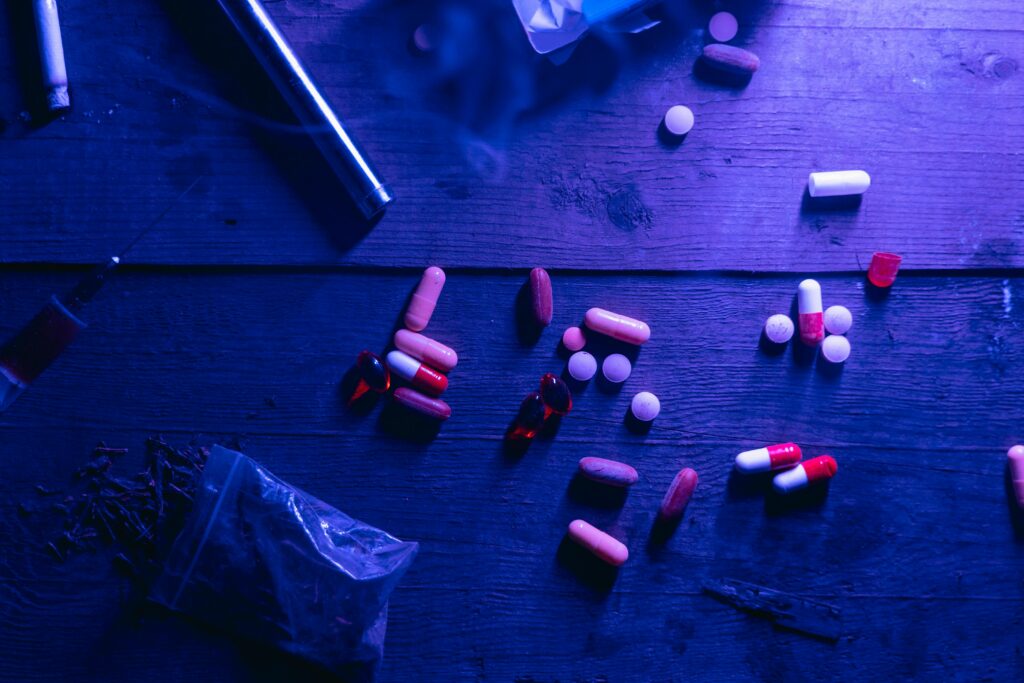Are opioids addictive? It’s a question many people ask after being prescribed pain medication or hearing news stories about the opioid crisis. At first glance, opioids might seem like helpful tools for managing pain—and they are. But they also come with a hidden cost: the potential for powerful physical and psychological dependence. What makes opioids so addictive? How do they affect the brain and body? And why can some people take them briefly with no issue, while others develop a life-altering addiction? In this blog post, we’ll unpack the hard science behind opioid dependence—what it is, how it develops, and what modern medicine knows about breaking free. We’ll also cover the role of prescription use, individual vulnerability, and recovery pathways, all with a focus on real-world relevance. If you or a loved one is concerned about opioid use, this guide will give you the clarity, insight, and next steps you need to understand the risks and reclaim control.
What Are Opioids? Understanding the Basics
Opioids are a class of drugs that include prescription medications like oxycodone, hydrocodone, morphine, and codeine, as well as illegal substances like heroin and synthetic compounds like fentanyl. They work by binding to specific receptors in the brain and spinal cord—the mu-opioid receptors—to block pain signals and release dopamine, the brain’s “feel-good” chemical. Initially developed to treat severe pain, especially post-surgical or cancer-related pain, opioids have become widely prescribed for chronic conditions like arthritis or back pain. Unfortunately, their widespread availability and euphoric effects have led to a parallel epidemic of misuse and addiction. According to the 2024 CDC Opioid Surveillance Report, more than 2.5 million Americans currently live with an opioid use disorder (OUD). And every day, an estimated 120 people die from opioid-related overdoses—many from drugs they were originally prescribed. So yes, opioids are effective painkillers. But they are also profoundly addictive—and not just for those who misuse them recreationally.
How Addiction Begins: The Brain’s Reward System
Addiction is not about weak willpower or poor choices—it’s a brain-based condition rooted in how opioids interact with our neurobiology. When you take an opioid, it doesn’t just relieve pain. It also floods the brain’s reward circuit with dopamine, creating feelings of pleasure, relaxation, and even euphoria. Over time, this artificial dopamine spike changes the brain’s baseline functioning. It begins to “expect” the opioid to feel good—or even feel normal. The brain’s own ability to produce dopamine diminishes, and natural rewards (like food, relationships, or accomplishments) feel less satisfying. This process is called neuroadaptation. And it’s what transforms normal use into compulsive, dependent behavior. The more frequently opioids are used, the stronger the craving becomes—not necessarily to get high, but to avoid withdrawal and emotional discomfort. This explains why people with opioid addiction often say they no longer feel “good” from the drug—they just feel okay or relieved when taking it. Without it, everything feels wrong.
Physical Dependence vs. Addiction: What’s the Difference?
It’s important to distinguish between physical dependence and addiction. Physical dependence means your body has adapted to a drug and will go through withdrawal if you stop taking it. This can happen with many medications, including antidepressants and blood pressure drugs—not just opioids. Addiction, on the other hand, includes behavioral components: cravings, compulsive use, and continued use despite harm. It’s entirely possible to become physically dependent on opioids without developing a full-blown addiction. For example, a person may take opioids exactly as prescribed for months and experience mild withdrawal symptoms when they stop—but they never crave the drug or misuse it. Still, physical dependence is often the first step toward addiction, especially when doses are increased or taken longer than recommended. The line between therapeutic use and addictive behavior can be blurry, especially when pain relief becomes tied to emotional regulation.
Tolerance and Withdrawal: The Body’s Adaptation Game
One of the most concerning aspects of opioid use is how quickly tolerance develops. Tolerance means you need more of the drug to get the same effect. Initially, a low dose of oxycodone might effectively manage your pain. But after a few weeks, it may seem ineffective—leading to dose increases. This pattern is dangerous because it increases the likelihood of physical dependence and overdose. At the same time, withdrawal symptoms emerge when the drug is reduced or stopped. These symptoms can include anxiety, sweating, nausea, muscle aches, insomnia, diarrhea, and intense cravings. Unlike withdrawal from substances like alcohol or benzodiazepines, opioid withdrawal is rarely life-threatening. But it can be so physically and emotionally punishing that many people return to using the drug just to feel better. The fear of withdrawal becomes a trap that reinforces continued use—even in people who desperately want to stop.
Genetics, Trauma, and Environment: Who’s Most at Risk?
Not everyone who uses opioids becomes addicted. In fact, some people can take them briefly without ever experiencing dependence. So why do some people get hooked while others don’t? It comes down to a combination of genetics, mental health, and life experience. Studies from the National Institute on Drug Abuse suggest that up to 60% of a person’s vulnerability to addiction may be hereditary. People with a family history of substance use disorders are at higher risk. Trauma also plays a major role. Survivors of childhood abuse, sexual assault, combat, or neglect are more likely to misuse substances to numb emotional pain. Mental health conditions like anxiety, depression, and PTSD further compound the risk, as opioids may offer temporary relief from emotional distress. Environmental factors matter, too. If someone lives in a community with high rates of opioid prescribing, few mental health resources, or poor economic conditions, their likelihood of addiction increases. Access + vulnerability = high risk.
The Rise of Synthetic Opioids: Fentanyl and Its Dangers
If prescription opioids opened the door to addiction, fentanyl kicked it wide open. This synthetic opioid is 50 to 100 times more potent than morphine and is often mixed—unknowingly—into counterfeit pills or street drugs. Just a few milligrams can be fatal. According to the 2024 DEA Drug Threat Report, over 70% of opioid-related overdose deaths now involve fentanyl. Part of what makes fentanyl so dangerous is its invisibility. People think they’re taking oxycodone or heroin but end up with something far stronger. This unpredictability makes overdose far more likely, even in experienced users. Naloxone (Narcan), an opioid-reversal drug, can save lives—but only if administered quickly and in high enough doses. As fentanyl continues to spread across urban and rural areas alike, public education, wider naloxone access, and harm-reduction strategies have become critical to saving lives.
Why the Brain Keeps Craving Opioids—Even After Detox
Many people believe detox is the hardest part of addiction. But in reality, the most difficult phase often comes after. That’s because while detox addresses the physical symptoms of withdrawal, it doesn’t fix the neurological changes that opioids have caused. The brain’s reward circuitry remains altered long after the drug is out of the body. Stress, anxiety, or even small triggers (like a song or location) can spark intense cravings months into recovery. This is why relapse is so common—especially when people don’t receive follow-up care or ongoing support. Think of addiction as a chronic condition, not a one-time event. Like diabetes or high blood pressure, it requires continuous management and attention.
Medication-Assisted Treatment (MAT): A Science-Backed Solution
Fortunately, science has developed effective treatments for opioid addiction—chief among them Medication-Assisted Treatment (MAT). MAT uses medications like buprenorphine (Suboxone), methadone, or naltrexone to reduce cravings and stabilize brain function. These medications don’t “substitute one addiction for another.” Rather, they help normalize brain chemistry so that recovery is possible. According to SAMHSA’s 2023 Treatment Outcome Study, people receiving MAT are 50–70% less likely to die from overdose and far more likely to stay in treatment. MAT is often combined with therapy, peer support, and life-skills coaching. It’s not a one-size-fits-all solution—but it is one of the most effective tools we have.
Can You Ever Take Opioids Safely?
Yes—but with caveats. Opioids still have a legitimate place in medical care, especially for acute pain after surgery or in end-of-life care. The key is to use them short-term, at the lowest effective dose, and under close supervision. Alternatives like NSAIDs, physical therapy, acupuncture, and cognitive behavioral therapy should be considered first for chronic pain. If opioids are prescribed, patients should ask questions: How long will I be on this? Are there non-opioid alternatives? What are the risks of dependence? And crucially, any signs of misuse—like taking extra doses or running out early—should be addressed immediately. Open communication between patients and providers can prevent a lot of heartache down the line.
A Story of Recovery: Kyle’s Turning Point
Kyle was 29 when he was prescribed Vicodin after a sports injury. At first, he took it as directed. But he soon found that it didn’t just dull his pain—it made his anxiety disappear. What began as five pills a day turned into ten, then fifteen. Within six months, Kyle was buying pills off the street. Eventually, he lost his job and crashed his car while driving high. After a court-mandated rehab program and two relapses, Kyle finally entered a MAT program with daily counseling and group therapy. It’s been three years. He now works as a recovery coach and says, “Opioids took a lot from me—but treatment gave me back my life.” Stories like Kyle’s illustrate an important truth: Recovery is real. And it’s never too late to start.
Actionable Takeaways
If you’re concerned about opioid use—whether for yourself or a loved one—here’s what you can do. Learn the signs of misuse: escalating doses, doctor shopping, social withdrawal, and secrecy. Request naloxone and learn how to use it—it’s available in most states without a prescription. Seek out MAT programs, especially those that offer integrated counseling. Explore non-opioid options for pain management, including physical therapy, anti-inflammatory meds, and mindfulness techniques. Talk to your doctor honestly about any history of addiction in your family. Most importantly, know that help is available—and effective. Addiction isn’t a moral failing. It’s a medical condition with proven solutions.
Conclusion: Understanding Leads to Empowerment
So—are opioids addictive? The answer is a resounding yes. But understanding why and how they’re addictive can help us respond with compassion, clarity, and evidence-based care. Opioids alter the brain in deep ways, but with the right treatment, people can heal. Whether you’re reading this as someone in recovery, someone considering treatment, or someone supporting a loved one, know this: There is hope. Science is on our side. And recovery isn’t just possible—it’s happening every day.
Renew Health: Your Partner in Opioid Addiction Care
Phone: 575‑363‑HELP (4357)
Website: www.renewhealth.com

